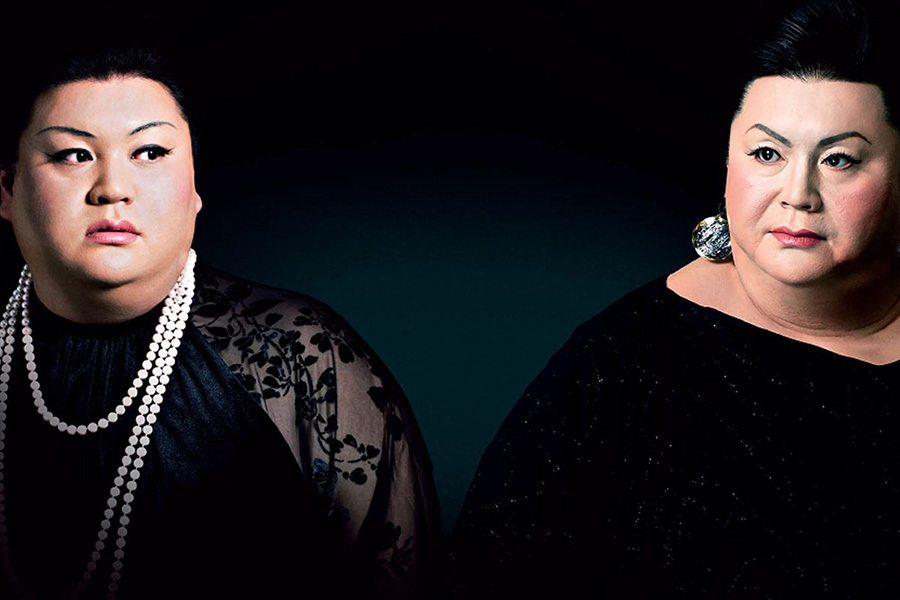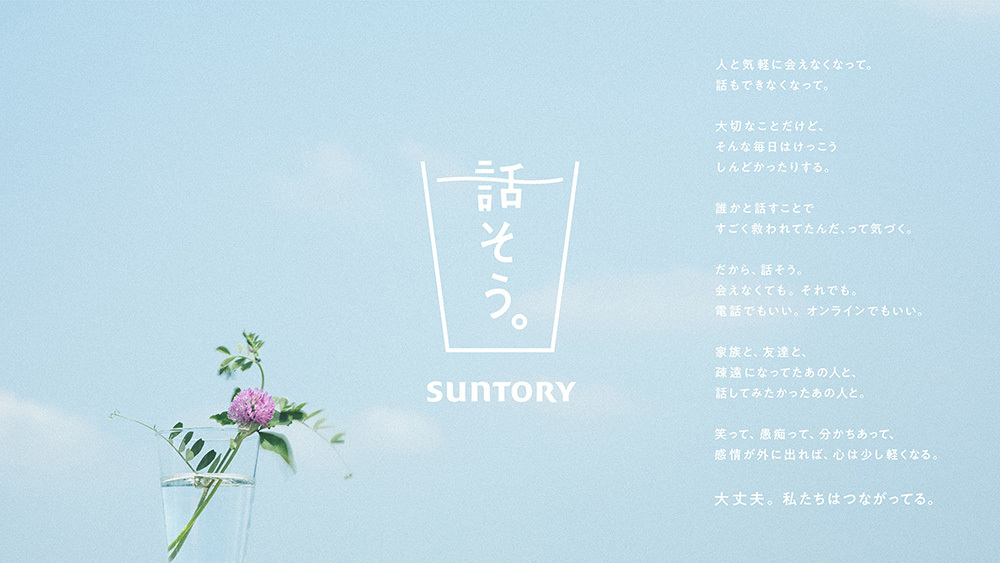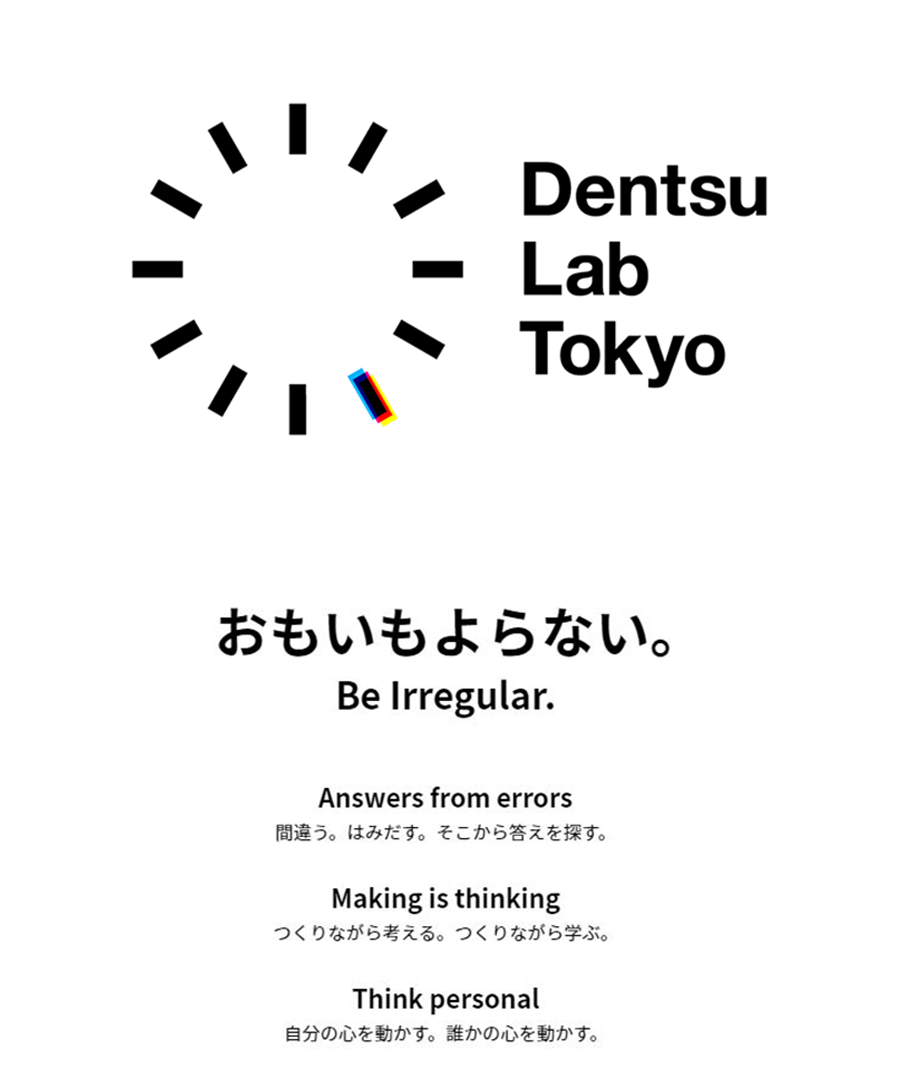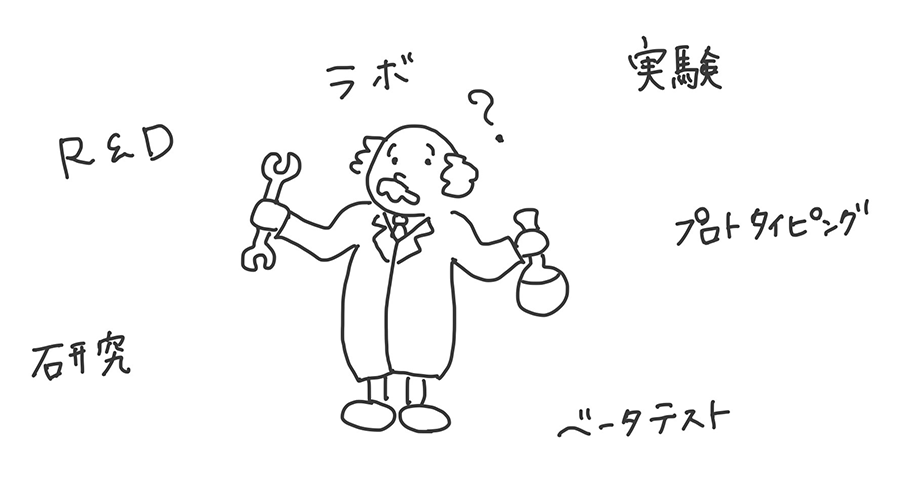It's been a year since we launched this column series, "The Delicious Relationship Between Technology and Ideas." We've featured articles overflowing with the members' passion for their favorite things—a series that's arguably too niche for Web Dentsu Inc. News.
Dentsu Lab Tokyo's mission is to solve client and societal challenges primarily through technology-driven ideas. In reality, our membership is fluid, with members coming and going through assignments and internships. At times, up to half our team consisted of external members. Currently, we collaborate organically with diverse talents—university professors, designers, engineers, CG artists, researchers, and producers—while working closely with our partner, Dentsu Craft Tokyo.
When I explain our organization, people often say, "It's like Dejima, isn't it?" Dejima was an artificial island built by the shogunate during the Edo period for diplomacy and trade. It was a place where scholars, missionaries, and trading post officials from around the world, including Siebold, came and went. Countless cultures and ways of life began there. Badminton, billiards, bowling, strawberries, cabbage, tomatoes, celery... When I heard that comparison, I thought, "Wow, that's a clever way to put it."
It's true we're inside Dentsu Inc., yet we're not . Unexpected chemical reactions occur. New methodologies are discovered. That's our strength. Because we're reaching outwards, we can see what's inside clearly too. Today, I'd like to introduce that "Dejima" feeling.

"Dutch Moonstone Painting" by Hasegawa Setsudan (A person is playing billiards in the background) Source: National Diet Library Rare Painting Database
If you've read our previous columns, you'll see our community spans a wide range. Naoki Tokui, an AI researcher teaching at Keio University SFC; Takashi Kawashima, the first Japanese member of Google Creative Lab; CG filmmaker Taihei Shibata; VR enthusiast Ryo Suetomi; and even Shingo Kinoshita, Principal Researcher at NTT Laboratories. This raises a question: Why is open innovation with such diverse people necessary? I'll meander through my thoughts as I write.
What exactly is Dentsu Inc. Lab?
I know, I know—after a year of writing this series, it feels a bit late to ask... But honestly, Dentsu Inc.'s lab is a bit of a mystery, isn't it? I get manufacturer labs, but... To share a bit about myself, I've been part of two labs before. The first was a typical graduate school lab. I was in mechanical engineering, sitting in front of machines every day, doing experiments, writing papers. The other was the Institute of Space and Astronautical Science, which I joined through an internship. The year after I joined, it got the cool new name "JAXA." I helped with research on materials that could withstand extreme heat at the tip of a rocket when it re-enters the atmosphere. Both were what you'd call "labs."
So, a lab is a place for R&D to create something new that didn't exist before, for making things. Manufacturers absolutely have labs. Google has one. Disney has one. So, what exactly is Dentsu Inc.'s lab for? What are they doing R&D on? Let's digress a bit more (laughs).
What exactly is creative R&D?
As mentioned earlier, labs belong to organizations that make things. The core purpose of a manufacturer is to create and sell products. To put it bluntly, that's their business model. In our case, we sometimes create and sell things with clients, but we also have another business model manufacturers don't have. That is providing ideas and deliverables (expressions, systems, products) to solve problems.
The consultations we receive range widely: from "We want to sell a product" to "We want to create a new way to watch sports," "We want to make pro baseball broadcasts a hot topic," "We want to create clothes that benefit society," and even "We want to energize people precisely because of the pandemic." Our clients are diverse—companies, governments, individuals. Naturally, new forms of expression and solutions are always demanded. This is why we embrace open innovation and continuously adapt with flexibility.

It might be R&D driven by passion.
The things we've created in response to such requests include the world's first talent android robot, "Matsukoroid"; "ZUNO," an AI system predicting baseball pitches; new sports spectator systems; and "UNLABELED," clothing designed to evade AI surveillance systems. During the state of emergency in the pandemic, we also ran the "Let's Talk." campaign with Suntory. We also created AR filters using Snap Camera.
Android Robot "Matsukoroid"
AI Pitch Prediction System "ZUNO"

Clothing to evade AI surveillance society "UNLABELED"

Suntory "Let's Talk." Campaign

Looking at these, none are straightforward problem-solving solutions. What we value is PLAYFUL SOLUTIONS (solving problems while having fun). More than that, I realized what we're creating is the emotion of "liking." "Liking" is the best weapon for moving people. So, what kind of expression, product, or service is needed for that? Looking back, I feel like we've always been doing R&D to create that feeling of "liking." And I believe what's essential for that is to think deeply about human nature and constantly seek new methodologies. That's why Dentsu Lab Tokyo and Dentsu Craft Tokyo exist – as places where people, individualities, and ideas collide, without being confined to advertising creativity.
Unexpected.
Within this creative process, we possess a strength that sets us apart from other labs. It's the "muscle of ideas" cultivated through advertising. By merging words, design, stories, and technology, we move people's hearts. We move society. We navigate between function and emotion.
In 2021, we renewed our website. The phrase we placed at the very top was "Unexpected." Because people's hearts are most moved when confronted with expressions that surpass their imagination. Moving forward, we will continue creating "unexpected" things that go beyond people's imagination, using technology and ideas.

Now, our year-long column "The Delicious Relationship Between Ideas and Technology" comes to a close for now. We're stationed in a place like Dejima, and just as it was in the Edo period, we'll keep generating new methodologies and content here. If reading this sparks your interest, please get in touch.
Oh, and on that note, I have two announcements: We're running our annual student internship program, " School of Technology and Ideas," again this year!

Key visual for the internship "School of Technology and Ideas." It uses moiré patterns to express how the overlap of individualities creates new methodologies.
Also, now in its second year, we have "Creative Aliens," an event inviting artists, researchers, and performers from Japan and abroad to deepen discussions and research on creativity. This is scheduled for around March, so please check it out. Well then, I hope to see you somewhere. Thank you very much.













